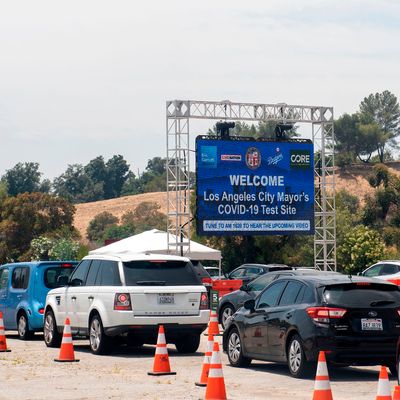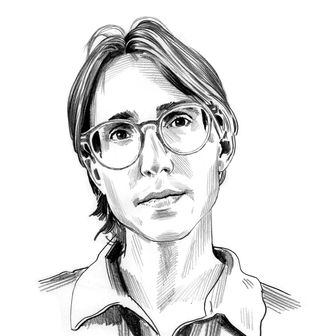
In the initial panic surrounding the outbreak of the coronavirus in the U.S., California instituted several measures — including the nation’s first stay-at-home order — which helped prevent massive levels of community spreading from occurring in its most densely populated cities. But four months into the pandemic, the most populous state is experiencing a most concerning uptick in cases: Over the past week, California has averaged 5,313 new cases every day. Since June 20, the state has recorded over 40,000 new cases, building its case total to 215,000.
Much of the growth has been centered in sprawling Los Angeles County, where 39 percent of the state’s cases have emerged in the past two weeks, though it contains just a quarter of the state’s population. According to an analysis from the Los Angeles Times, the turnaround can be traced back to gatherings beginning on Memorial Day; the same goes for several states in the South and West that saw exponential growth in cases over the past week.
On Sunday, public-health officials reported 2,542 new cases, the second-highest single-day total recorded in the county. As a consequence, Governor Gavin Newsom ordered bars closed in Los Angeles County as well as in six other counties. “While we did anticipate increases in cases as sectors reopened, we did not expect the increases to be this steep this quickly,” explained Los Angeles County public health director Barbara Ferrer on Friday. “Without immediate actions to slow the spread, we risk having too many people requiring hospital care and possibly overwhelming our health-care system.”
While hospitals can handle the current caseload, the rapid growth in hospitalizations is a cause for concern: On Saturday, 4,498 patients were hospitalized, around 50 percent more than the mid-April average. And on Monday, Newsom announced that 39 percent of the state’s ICU beds were in use for coronavirus patients. L.A. County health officials are now projecting that its hospitals could run out of beds in two to three weeks, while its ICU beds could run out sometime in July.
While L.A. County has long been a hot spot — over 3,300 of the state’s 5,971 deaths have occurred there — the resurgent outbreaks have not been limited to southern California. A significant uptick has occurred at San Quentin State Prison north of San Francisco, where almost a third of all inmates have contracted the virus in just under two weeks. At least 89 workers, who all live in surrounding counties, have tested positive as well. The patient count at San Quentin — which grew to just over 1,000 on June 29 — now represents close to half of confirmed cases in the entire California state prison system.
The decision to close bars in several major counties — as well as San Francisco’s decision on Friday not to go ahead with its reopening of bars on Monday — appears to be an effort to dampen the spread of the virus among young adults, who are driving the surge of cases in states including Texas, Florida, and Arizona. The trend appears to be consistent in California:
As a result of the increased transmission rate and surge in cases, many iconic destinations in the state will be closed for the Fourth of July, including all L.A. County beaches, the campgrounds at Yosemite, and Disneyland.






























